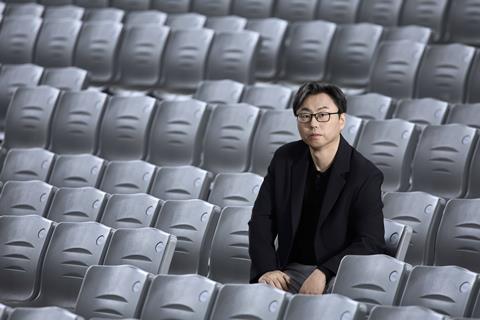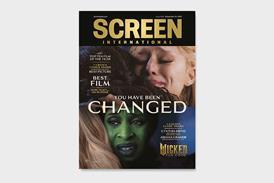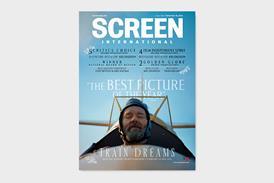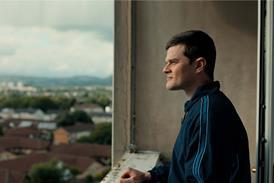
Busan International Film Festival (BIFF) is to mark its landmark 30th edition with a boost in the number of features and screening venues as it transitions into a competitive festival for the first time.
In his first interview since being appointed festival director of BIFF in March, Jung Hanseok has revealed plans to “reinvigorate the ecosystem” of its various sections to inject “life and visibility” to its selection.
“Our most immediate task is launching the newly established competition section,” said Jung, who was previously a programmer at BIFF, Korea’s leading film festival that remains one of the biggest in Asia. “We are fine-tuning the details to ensure we invite strong films and high-profile guests.”
Scroll down for full interview
He said the goal was programme around 240 films, up from 224 last year as it edges back toward its pre-pandemic levels of around 300 titles. This will include around 10 of the best Asian films made since 1996, the year BIFF launched.
Jung also said his appointment represents a “generational shift” as BIFF looks to move beyond a string of top-level resignations in 2023, which saw the role of festival director remain vacant until two months ago.
“What happened was the rupture of internal issues that had long been left unaddressed,” said Jung. “Any organisation going through transformation inevitably experiences such moments. While I haven’t publicly addressed it, many see my appointment marking a generational shift. I believe BIFF is now headed in the right direction, and I am fully committed to guiding it through this new chapter as a competitive festival.”
This year’s edition is set to be held from September 17-26, close to a month earlier than usual, to avoid the country’s national holiday period that falls in mid-October.
Jung spoke to Screen about evolving BIFF into a competitive festival, a trophy designed by director Apichatpong Weerasethakul, his perspective on the leadership shake-up and his thoughts on the challenges facing the Korean film industry.
What do you see as the key challenges facing BIFF today? What are the most significant issues the festival must address in 2025 and beyond?
Our most immediate task is launching and stabilising the newly established competition section. We are focused on fine-tuning the details to ensure we can invite strong films and high-profile guests. We’re not expecting the competition section to establish itself fully within a single year—this will require trial and error. The goal is to create a strong promotional platform for selected titles so that they are motivated to return to the festival in the future.
After 29 editions, we believe it is time for BIFF to evolve into a competitive festival. Additionally, we are aware of concerns from audiences about how difficult it is to secure tickets for in-demand films. In response, we plan to increase the number of screening venues this year to improve accessibility for both guests and general audiences.
BIFF celebrates its 30th edition this year. Are there any special initiatives planned to mark this milestone?
To reflect on the evolution of Asian cinema over the years, we have conducted the “Asian Cinema 100” survey every five years. This year, 166 film professionals worldwide participated, and we selected 132 films by 70 directors. We also conducted an additional survey to identify the “100 Best Asian Films Since 1996,” the year BIFF began. The list will be announced soon, and we will host a special programme showcasing around 10 of these works during the festival.
Will any special retrospective sections or commemorative screenings for the 30th edition, perhaps featuring past BIFF highlights?
Beyond the “Asian Cinema 100” project, we have several special programmes in the works, but it’s too early to reveal details. While last year’s festival was predominantly domestic in focus, this year we are committed to securing a truly international lineup of films and guests that befits the international film festival.
Are any notable changes or new elements introduced this year, whether in programming, audience engagement, or international partnerships?
We are creating a brand-new trophy for the competition section. Until now, BIFF has used a variety of trophies depending on the award, but we have never had one unifying, symbolic design. The new award will be called the “Busan Award.” We are honoured to have director Apichatpong Weerasethakul – renowned not only as a filmmaker but also as an installation artist – design the trophy. He shared that he has never designed a trophy before and is excited to take on the challenge. The design is in the sketching phase, and he is deeply involved in the entire production process. We’ve encouraged him to explore his imagination freely for this piece.
BIFF is being held two weeks earlier than usual this year due to the Chuseok holiday. Do you anticipate any particular effects, positive or negative, especially with the timing now just after Venice and Toronto?
The shift doesn’t pose a major issue. In previous years, the New York Film Festival often overlapped with BIFF, occasionally complicating guest invitations, especially for Asian filmmakers. This year, BIFF’s earlier dates may help in that regard. The only genuine concern is weather-related, as September still falls within typhoon season in Korea.
Two years ago, BIFF faced a leadership shake-up. What is your perspective on the aftermath of that period, and do you see your appointment as a turning point?
What happened was the rupture of internal issues that had long been left unaddressed. Any organisation going through transformation inevitably experiences such moments. While I haven’t publicly addressed it, many see my appointment marking a generational shift. I believe BIFF is now headed in the right direction, and I am fully committed to guiding it through this new chapter as a competitive festival.
Last year, BIFF saw a nearly 50% reduction in funding from the Korean Film Council (KOFIC). What are your expectations for this year’s support?
Specifically, we received $435,000 (KRW610m) last year, and this year, $406,000 (KRW570m) so yes, there’s been a slight decrease. It’s important to note that funding has declined across the board, not just for BIFF. KOFIC has revised its funding system, and more festivals are now eligible, which has diluted individual allocations. That said, BIFF still receives the highest support among Korean festivals. While the reduction isn’t devastating, I hope national funding for film festivals becomes more robust and forward-looking.
Which area of the budget requires the most expenditure?
One key area we’ve had to forgo due to budget constraints is our forum, particularly international academic forums, in high demand from scholars. These require significant funds for overseas guest invitations. However, this year, we plan to relaunch and expand the programme under “Forum BIFF,” which is already generating considerable interest.
In your view, what are BIFF’s unique strengths? What distinguishes it from other international film festivals?
Above all, I would point to BIFF’s unparalleled audience energy. No other festival can match the enthusiasm of our audiences, and we value that deeply. However, we cannot assume this audience’s passion will last forever. This question faces all major festivals. That’s why we’re working hard to improve the festival experience, invite better films, and implement more dynamic programming.
With a younger festival director at the helm, might we see a shift in programming perspective or selection criteria?
I want to reinvigorate the ecosystem of BIFF’s various sections. For example, the opening film – screened to 4,000 people at the Busan Cinema Center – must appeal to a diverse audience. That’s common at major festivals. But in the past, BIFF has focused its attention on the opening film. When you have 240 titles, emphasising only one is a missed opportunity. We need to give life and visibility to all sections.
We also plan to increase the total number of titles gradually. This year’s goal is 240 films. Simultaneously, we’re working to expand screening venues to ensure greater access. Last year’s audience occupancy rate was 84%, the highest ever, but many were still without tickets. Even if that percentage dips slightly, ensuring more people get to see films is more important. We are negotiating with non-cinema venues near the Busan Cinema Center to convert them for screenings, and we’re in talks with dedicated cinemas outside the Centum City area.
Expanding screening venues seems aligned with BIFF’s audience-friendly direction. What is your mid-to-long-term vision for the festival? Do you have any concrete goals or strategies for your four-year term?
It may sound paradoxical, but we must pursue two goals simultaneously. For professionals, the bar should be raised. BIFF should be recognised as a festival that enhances the value and promotion of selected films. For the general audience, we must lower barriers and provide a welcoming, accessible experience. These goals are not mutually exclusive.
From its inception, BIFF has never been an elitist festival. A film festival is a living organism. It can evolve, merge, and adapt. The competition section, in particular, must gain professionals’ recognition so filmmakers view it as a valuable promotional platform.
What are your thoughts on the Korean film industry’s challenges? How do you see BIFF contributing in this context?
Back in 2019, when I became a Korean film programmer, I was asked a similar question. At the time, concerns about the industry’s stagnation were emerging. I identified “safety-first thinking” as the most significant issue. Korean cinema had become overly reliant on corporate, formula-driven models, leading to creative stagnation. Then came the pandemic, which further discouraged risk-taking. Even capable producers and investors became hesitant to move beyond what felt secure.
Now, even with OTT’s dominance, I don’t believe the simple disappearance of streaming platforms would bring audiences back to cinemas. We need to rethink how to draw people to theatres. I believe the most critical insight must now come from producers and investors, not just directors. We continue to see talented directors emerge, but they need producers and backers willing to take chances. Above all, this requires meaningful policy reform to support such risks. It’s time for a serious reassessment of Korea’s film policy framework.
What would you like international buyers and film professionals to understand about Korean cinema today?
Global buyers and major film festivals perceive Korean cinema in two ways. One, the auteurs – Hong Sangsoo, Park Chan-wook, Bong Joon Ho, and Lee Chang-dong. Sometimes Na Hong-jin is added to that list. Two are Korean commercial genre films, like those that often screen in the midnight sections at Cannes.
These two categories have long shaped the perception of Korean cinema abroad. But I hope international industry professionals will look beyond that binary. There is a wealth of remarkable Korean films that fall outside those definitions—films like A Wild Roomer by Lee Jeong-hong, Moving On by Yoon Danbi, and House Of Hummingbird by Kim Bora, all of which had their world premieres in Busan.















![[Clockwise from top left]: Paul Thomas Anderson, Chloe Zhao, Ryan Coogler, Park Chan-wook](https://d1nslcd7m2225b.cloudfront.net/Pictures/274x183/9/0/0/1467900_writerdirectors_192733.jpg)





![[Clockwise from top left]: Paul Thomas Anderson, Chloe Zhao, Ryan Coogler, Park Chan-wook](https://d1nslcd7m2225b.cloudfront.net/Pictures/100x67/9/0/0/1467900_writerdirectors_192733.jpg)


No comments yet